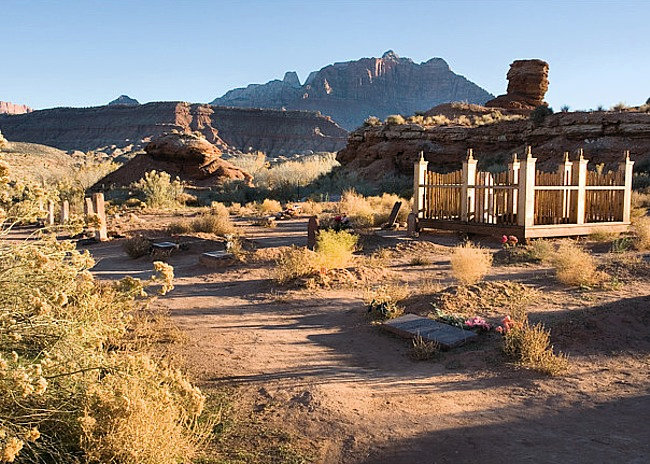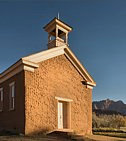|
Scenic USA - Utah Grafton Town Cemetery |

| Photos by Scott Dommin Scott's PBase Gallery |
Hanging on against Indian attacks, epidemics, isolation and a raging Virgin River, Grafton's town history reveals a constant struggle to stay alive. Completely washed away by floodwaters in 1862, the town was rebuilt further upstream, only to be deserted in 1866 after a Native American uprising known as the Black Hawk War. Showing a strong will, determination and perseverance, Grafton families had returned by 1868.
First established as a Mormon cotton farm, Grafton resident quickly discovered the harsh realities of a wild Virgin River. Along with its seasonal flooding, silt continually filled their irrigation ditches. At its peak, 28 families resided at Grafton. Families lived in log houses, enjoying the benefits of a post office, church, school and community hall. The schoolhouse, standing on a foundation of lava rocks, was built of hand-made adobe bricks. Settlers completed the roof structure with lumber cut from the hills on Mount Trumbull nearly 75 miles away.
 The Grafton Cemetery, pictured here, is located on high ground off on a side road leading into Grafton. More than the line of headstones indicates, the cemetery is thought to contain 80 gravesite. Along with Grafton residents, the cemetery also includes the graves of Native Paiute.
The Grafton Cemetery, pictured here, is located on high ground off on a side road leading into Grafton. More than the line of headstones indicates, the cemetery is thought to contain 80 gravesite. Along with Grafton residents, the cemetery also includes the graves of Native Paiute.
Said to be one of the most photographed ghost towns in the West, the town's buildings are a mix of original structures and movie sets constructed for the 1969 American Western film Butch Cassidy and the Sundance Kid. Past ghost town refurbishment projects included the schoolhouse, which is looking pretty good for a century old structure made of adobe. Surrounded by a variety of dramatic Zion mesas and colorful cliffs, for ghost town hunters this peaceful setting may be worth a side trip.
Area Map

|
Additional Area Attractions |
|
Copyright © 2023 Benjamin Prepelka
All Rights Reserved
